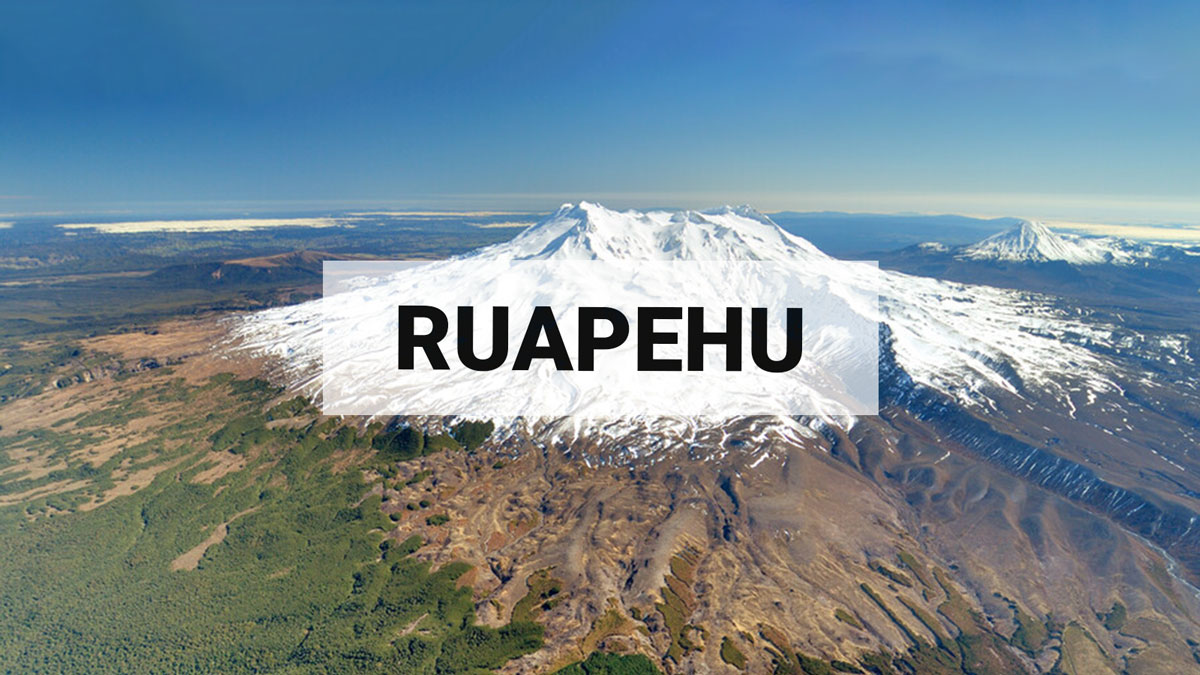
Activity decreases at Mt Ruapehu. The Volcanic Alert Level is lowered to 1.
General activity at Mt Ruapehu has decreased over the past two weeks. Volcanic gas emissions are back to normal levels and volcanic tremor declined. While the crater lake temperature remains high, the period of moderate to heightened volcanic unrest has now ended. The Volcanic Alert Level at Mt Ruapehu is lowered to Level 1.
On 30 December 2020, we observed that the volcanic gas emissions from Ruapehu had declined to normal levels, from the highs observed in mid-December. On 29 December 2020, volcanic tremor, which had previously been slightly elevated following a volcanic earthquake on 26 December 2020, declined to a low level, and has remained low. Chemical analysis of water collected from Crater Lake (Te Wai ā-moe) on 31 December 2020 showed only small changes in key parameters since previous observations a few weeks earlier on 2 December 2020. While the temperature of the water in Crater Lake (Te Wai ā-moe) remains high, at 40 ºC, taking all of the observations into consideration, the period of moderate to heightened volcanic unrest is now judged to have ended.
The temperature of water in Crater Lake (Te Wai ā-moe) reached a maximum of 43 ºC on 21 December 2020, and in the last three weeks has declined to 40 ºC. Our modelling shows that ~200 MW (megawatt) of heat is still entering the lake; this heat is expected to lag behind the high gas emissions observed in mid-December, so the slow decline in lake temperature is expected.
The key parameters in our interpretation of the reduced unrest at Ruapehu are the low volcanic gas emission rate, the reduced level of volcanic tremors, and the small changes in lake water chemistry. Because these three parameters have either lowered or shown only small changes, the continuing high temperature of water in Crater Lake (Te Wai ā-moe) is not of concern, and therefore the Volcanic Alert Level is lowered to Level 1.
In the next 1-2 weeks, if weather conditions permit, we will make a further observation of volcanic gas emissions, and collect a new water sample from Crater Lake (Te Wai āmoe) for chemical analyses. Together with our real-time data sets (seismic, ground deformation, and visual observations), these will help us monitor what we expect to be a slow decline in lake temperature.
The Volcanic Alert Level is lowered to Level 1 which reflects the current level of volcanic activity. Mt Ruapehu is an active volcano and has the potential to erupt with little or no warning when in a state of volcanic unrest. The Aviation Colour Code is lowered to Green.
The Volcanic Alert Level should not be used to forecast future activity, however at Volcanic Alert Level 1, eruptions are less likely than at Volcanic Alert Level 2.
Volcanic Alert Level 1 indicates the primary hazards are those expected during volcanic unrest: steam discharge, volcanic gas, earthquakes, landslides and hydrothermal activity. While Volcanic Alert Level 1 is mostly associated with environmental hazards, eruptions can still occur with little or no warning.
For information on access to the Mt Ruapehu area, please visit the Department of Conservation’s website or follow DOC’s Facebook page for further updates.
GNS Science and the National Geohazards Monitoring Centre continue to closely monitor Mt Ruapehu for further changes.
Steven Sherburn Duty Volcanologist Media Contact: 021 574 541 or media@gns.cri.nz
